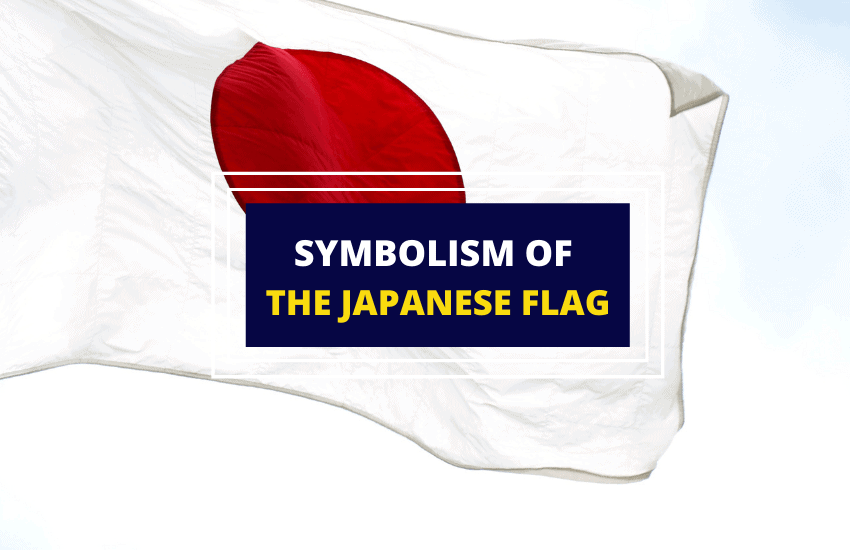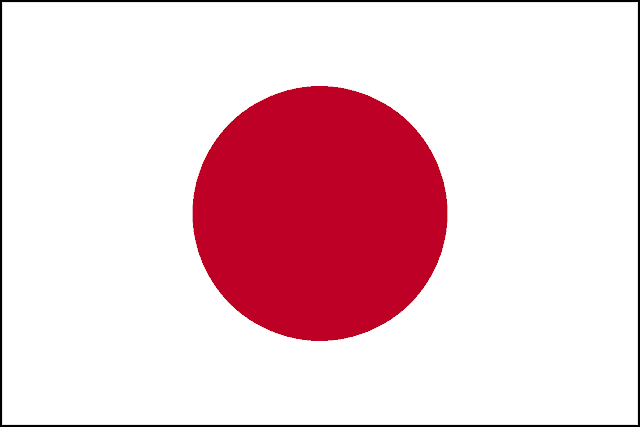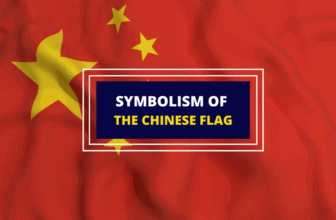
Table of Contents
How can anyone forget what the flag of Japan looks like? Aside from having a simple and distinct design, it also perfectly matches what Japan is traditionally known as: The Land of the Rising Sun. The minimalist and clean design of a red sun symbol over a pure white background sets it apart from most other national flags.
If you’re interested in learning more about how Japan’s flag evolved and what it symbolizes, you’re in the right place. Read on to find out more about this iconic symbol.
Symbolism of the Japanese Flag
The Japanese flag consists of a pure white banner with a red disk at the center, which symbolizes the sun. While it is officially referred to as Nisshōki, which means sun-mark flag, others refer to it as Hinomaru, which translates as the circle of the sun.
The red disk occupies a prominent position in the Japanese flag because it symbolizes the sun, which has always had a remarkable mythological and religious significance in Japanese culture. For instance, legend has it that the sun goddess Amaterasu was a direct ancestor of Japan’s long line of emperors. This relationship between the goddess and the emperor strengthens the legitimacy of every emperor’s rule.
Since every Japanese emperor is referred to as a Son of the Sun and Japan itself is known as the Land of the Rising Sun, the importance of the sun in Japan’s mythology and folklore can’t be stressed enough. First used by Emperor Monmu in 701 AD, Japan’s sun-themed flag maintained its status throughout Japan’s history and became its official symbol until the present time.
Other interpretations of the red disk and the white background in the Japanese flag have also popped up over the years.
Some say that the sun symbol is meant to symbolize prosperity for Japan and its people, while its pure white background represents the honesty, purity, and integrity of its citizens. This symbolism reflects the qualities that the Japanese people aspire to have as they strive to advance their country’s growth.
Importance of the Sun in Japan

To understand why the sun disk came to be a significant element of the Japanese flag, it helps to have a basic understanding of the country’s culture and history.
Japan used to be called Wa or Wakoku by ancient Chinese dynasties. However, the Japanese found this term offensive as it meant submissive or dwarf. Japanese envoys requested to change this to Nipon, which eventually evolved to Nihon, a word that literally meant the sun’s origin.
How Japan came to be known as the Land of the Rising Sun is also an interesting story.
There’s a misconception that the country got this name because the sun rises first in Japan. However, the actual reason is due to the fact that it is located where the sun rises for the Chinese people. Historical records show that the Japanese Emperor once referred to himself as the Emperor of the Rising Sun in one of his letters to the Chinese Emperor Yang of Sui.
The Japanese Flag During the War
The Japanese flag maintained its status as an important national symbol throughout several wars and conflicts.
The Japanese people used it to express their patriotism and celebrate their victories during times of war. Moreover, soldiers received Hinomaru Yosegaki, which was a Japanese flag bundled with a written prayer. It was believed to bring good luck and to ensure the safe return of Japanese soldiers.
During the war, kamikaze pilots were often seen wearing a hachimaki, a headband that had the same red disk in the Japanese flag. The Japanese people continue to use this headband as a sign of encouragement, believing that it symbolized perseverance and hard work.
Japan’s Flag in Modern Times
When the war ended, the Japanese government no longer required its people to fly the flag on national holidays. It was still encouraged but it was no longer considered mandatory.
Today, the Japanese flag continues to invoke feelings of patriotism and nationalism. Schools, businesses, and government offices fly it high above their buildings all day long. When flown together with another country’s flag, they usually put the banner in a more prominent position and display the guest flag on its right side.
To foster respect for the flag’s historical significance, the Ministry of Education issued a curriculum guideline that requires schools to raise it at the entrance and during commencement exercises. Students are also instructed to sing the national anthem when the flag is raised. All these rules are in place to encourage children to respect the Japanese flag and the national anthem, mostly because of the belief that nationalism contributes to responsible citizenship.
Different Versions of the Japanese Flag
While Japan has remained consistent in terms of using its present flag, its design has gone through several iterations over the years.
Its first version was known as the Rising Sun Flag, which had the familiar sun disk with 16 rays emanating from its center. During the World War, the Imperial Japanese Army used this design while the Imperial Japanese Navy used a modified version where the red disk was positioned slightly to the left. This is the version of the flag that has sparked some controversy today (see below).
When World War II ended, the Japanese government ceased the use of both flags. However, the Japanese Navy eventually re-adopted it and continues to use it up to this day. Their version features a golden border and a red disk with 8 instead of the usual 16 rays.
Every prefecture in Japan also has a unique flag. Each of its 47 prefectures has a distinct banner with a mono-colored background and a recognizable symbol at the center. The symbols in these prefectural flags feature highly stylized letters from Japan’s official writing system.
Controversy of the Japanese Rising Sun Flag
While the Japanese Navy continues to use the rising sun flag (the version with the 16 rays) some countries express strong opposition to its use. It receives the strongest criticism from South Korea, where some people consider it as a counterpart of the Nazi swastika. They even went as far as requesting to have it banned from the Tokyo Olympics.
But why do people, especially Koreans, find this version of the Japanese flag offensive?
Simply put, it reminds them of the pain and suffering that the Japanese rule brought to Korea and other Asian countries. In 1905, Japan occupied Korea and forced thousands of its people into labor. Young women were also put in brothels that were built for Japanese soldiers during World War II. All these atrocities have created a huge rift between the Japanese and Korean people.
It’s not just the Koreans who are unhappy about Japan’s rising sun flag. The Chinese also express strong sentiment against it because it reminds them of how Japan took over the city of Nanjing in 1937. During this time, the Japanese went on a months-long rampage of rape and murder throughout the city.
However, the current Chinese government under the presidency of Xi Jinping is trying to improve its relationship with Japan. Professor David Arase of John Hopkins University in the Nanjing Campus believes that this is exactly why China hasn’t been as vocal as South Korea in terms of having the said flag banned. Note, however, that no one has any issues with the national flag.
Facts About the Japanese Flag
Now that you know more about the history of the Japanese flag and what it symbolizes, it would be interesting to learn how its meaning and significance evolved over the years. Here are some interesting facts about it:
- Although historical documents state that the first use of the Japanese flag dates back to 701 AD, it took thousands of years before the Japanese government officially adopted it. In 1999, the Act on the National Flag and Anthem came into law and declared the timeless sun-mark banner as its official flag.
- Japan prescribes extremely specific dimensions for the national flag. Its height and length need to be a ratio of 2 to 3 and its red disk should occupy exactly 3/5 of the flag’s total width. Also, while most people think that the color red is used for the disk at its center, its precise color is actually crimson.
- The Izumo Shrine in the Shimane Prefecture features the largest Japanese flag. It weighs 49 kilograms and measures 9 x 13.6 x 47 meters when flown in the air.
Wrapping Up
Whether you’ve seen the Japanese flag in historical movies or at major sporting events like the Olympics, its distinct features will leave a lasting impression on you. As simple as its present design might seem, it perfectly illustrates Japan as the Land of the Rising Sun, making it one of the country’s most iconic national symbols. It continues to invoke a sense of pride and nationalism among its people, reflecting their strong sense of national identity.








